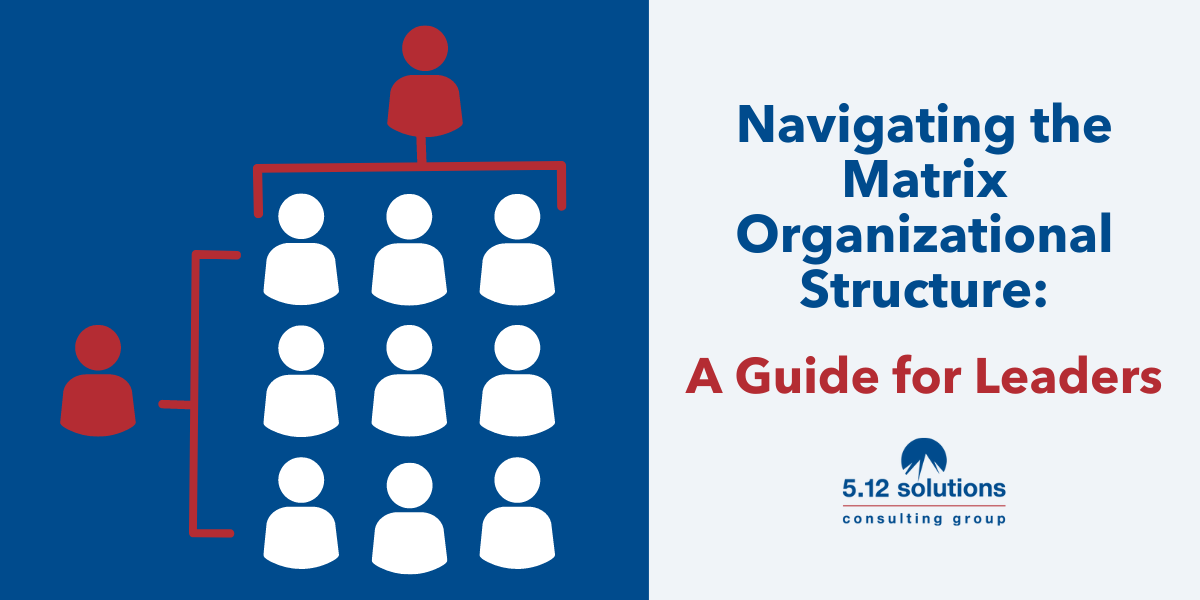“Finding the person who will step up and say ‘I own this’ is tough to find.”
“The ability to prioritize with two masters is extremely difficult.”
“Some Global Leaders believe the Regions exist to put data in a powerpoint.”
These are just a few of the comments we’ve heard from leaders trying to manage in a matrix organizational structure.
The truth? At times,it’s not so fun.
But in the ever-evolving landscape of corporate America, the matrix organizational structure has become a popular model for enabling agility and responsiveness in an increasingly complex and interconnected world.
However, the matrix organizational structure does not come without its unique set of challenges for leaders. Understanding these dilemmas and deploying effective strategies to overcome them is crucial for harnessing the full potential of the matrix model.
The Matrix Organizational Structure: A Quick Overview
According to the Project Management Institute, in a matrix organization, there are usually two chains of command, one along functional lines and the other along project, product, or client lines.
The matrix structure is characterized by its blend of functional and divisional chains of command, creating a two-dimensional grid of authority and communication.
This model is designed to facilitate the flow of information and collaboration across traditional boundaries, fostering a dynamic work environment that can adapt to changing business needs. Yet, this fluidity can also lead to ambiguity and complexity in roles, responsibilities, and decision-making processes.
Common Challenges Leaders Face
Every organizational structure comes with its pros and cons. Sometimes it can feel like there are more cons when you are in the midst of navigating the complexities of a matrix structure. Here are 5 top challenges our clients have encountered:
- 1. Role Ambiguity and Conflict: One of the most prevalent issues in a matrix structure is the confusion over roles and responsibilities. Employees may report to multiple managers for different projects, which can easily lead to conflicting priorities and demands.
- 2. Power Struggles: The dual-command system can result in power struggles as functional and project managers vie for authority and resources. This competition can hinder collaboration and slow down decision-making processes.
- 3. Communication Overload: The increase in collaboration and the need for constant communication can overwhelm employees and managers, leading to information overload and decreases in productivity.
- 4. Difficulty in Performance Evaluation: Assessing individual performance becomes complex when employees are involved in multiple projects with different teams and leaders.
- 5. Multiple “First Teams”: In a traditional hierarchical structure, in smaller organizations, it’s easy for a leadership team to point to their peers as their “first team”. But in a matrix organization, the “First Team” concept isn’t as clear and, frankly, may not even apply. Loyalties often lie across multiple teams at both a Regional and Global level.
If your organization is operating in a global environment, you may also experience cultural and time zone differences that may exacerbate the issues above.
Strategies for Operating in a Matrix Organizational Model
Successfully navigating a matrix structure requires deliberate strategies that address its inherent challenges. Here are some tactics leaders can employ:
- Establish broad stakeholder relationships – before you need them. Building a network of broad stakeholder relationships in advance prepares you for the complexities of navigating a matrix organization. It also ensures you have a robust support system for collaboration and decision-making when challenges arise and when competing priorities exist.
- Clarify Roles and Responsibilities: Develop clear job descriptions and project charters that delineate roles, responsibilities, and authority levels for all team members. Regularly revisit and update these documents to reflect changes in projects and organizational goals.
- Foster a Culture of Collaboration and Trust: Encourage an organizational culture that values openness, teamwork, and mutual respect. Facilitate team-building activities and open communication channels to build trust among team members who report to different managers. Team members need to be able to walk in each others’ shoes.
- Establish Conflict Resolution Mechanisms: It’s normal to have competing priorities in a matrix structure. Establishing productive conflict norms in advance will help people resolve those competing conflicts and prevent them from escalating and affecting morale and productivity.
- Implement Efficient Communication Tools and Protocols: Leverage technology to streamline communication and ensure that all team members are informed and engaged. Establish protocols for regular updates and meetings that respect everyone’s time and contributions.
- Adopt a Flexible Leadership Style: Flexibility in leadership fosters a more responsive and empowered workforce. Leaders should be adaptable, moving fluidly between directive and supportive leadership styles based on the team’s needs and project stage.
- Refine Performance Evaluation Systems: Tailor performance evaluation systems to account for the complexities of matrix roles. Include metrics that reflect collaborative success and individual contribution to multiple projects. Consider 360-degree feedback to capture a comprehensive view of employee performance.
Conclusion
As the corporate landscape continues to evolve, the matrix model remains a vital tool for organizations seeking to remain agile and competitive.
It’s normal for there to be tension between corporate and regional or between the functions and operations. Embracing the complexities and opportunities of this structure can lead to a more engaged, collaborative, and successful workforce.
No matter what you think of the matrix model, one thing is certain: You can’t afford “business as usual” in today’s world. If your team needs help navigating these complexities, we’d love to help you out. Schedule your complimentary Insight Session to get started.

